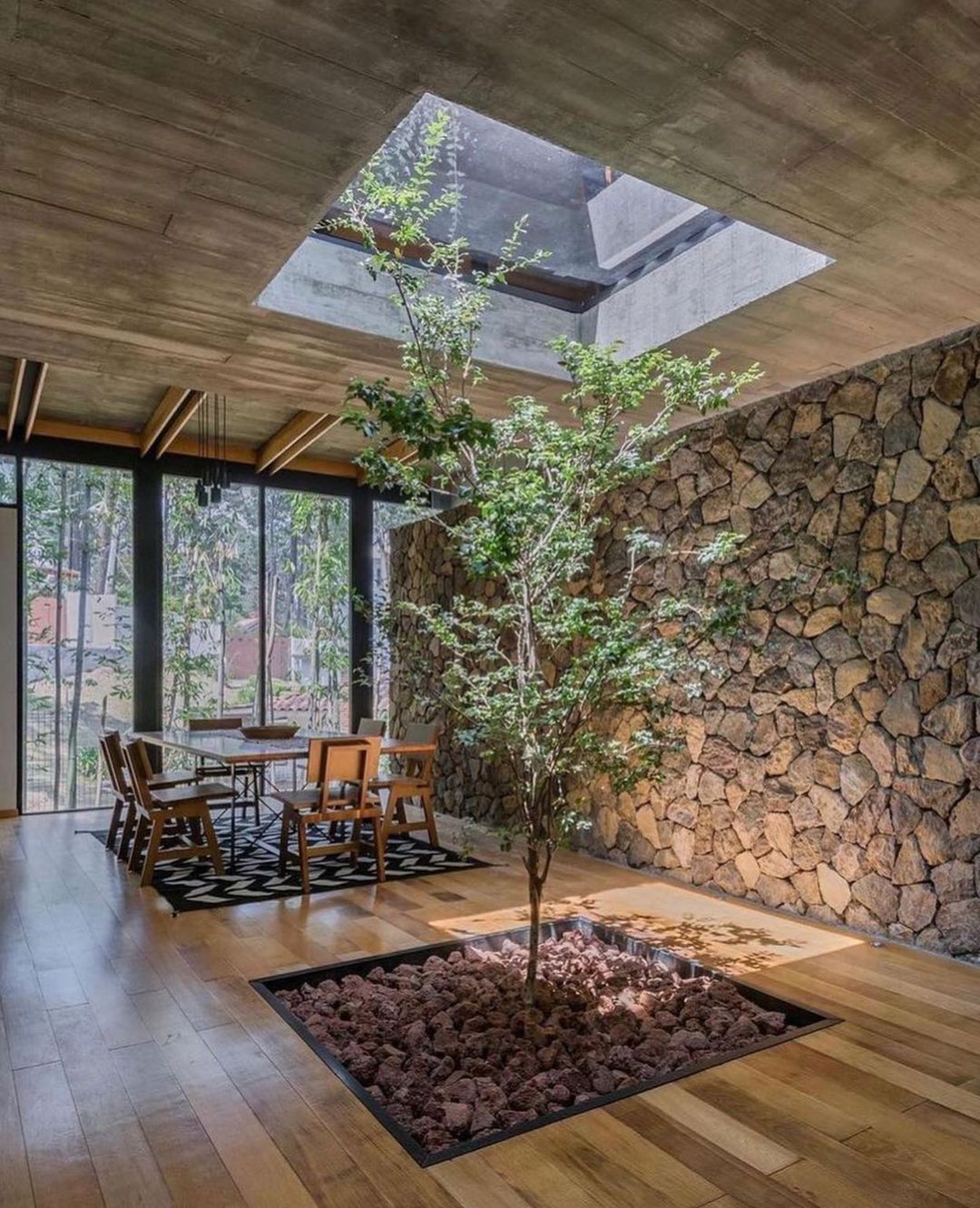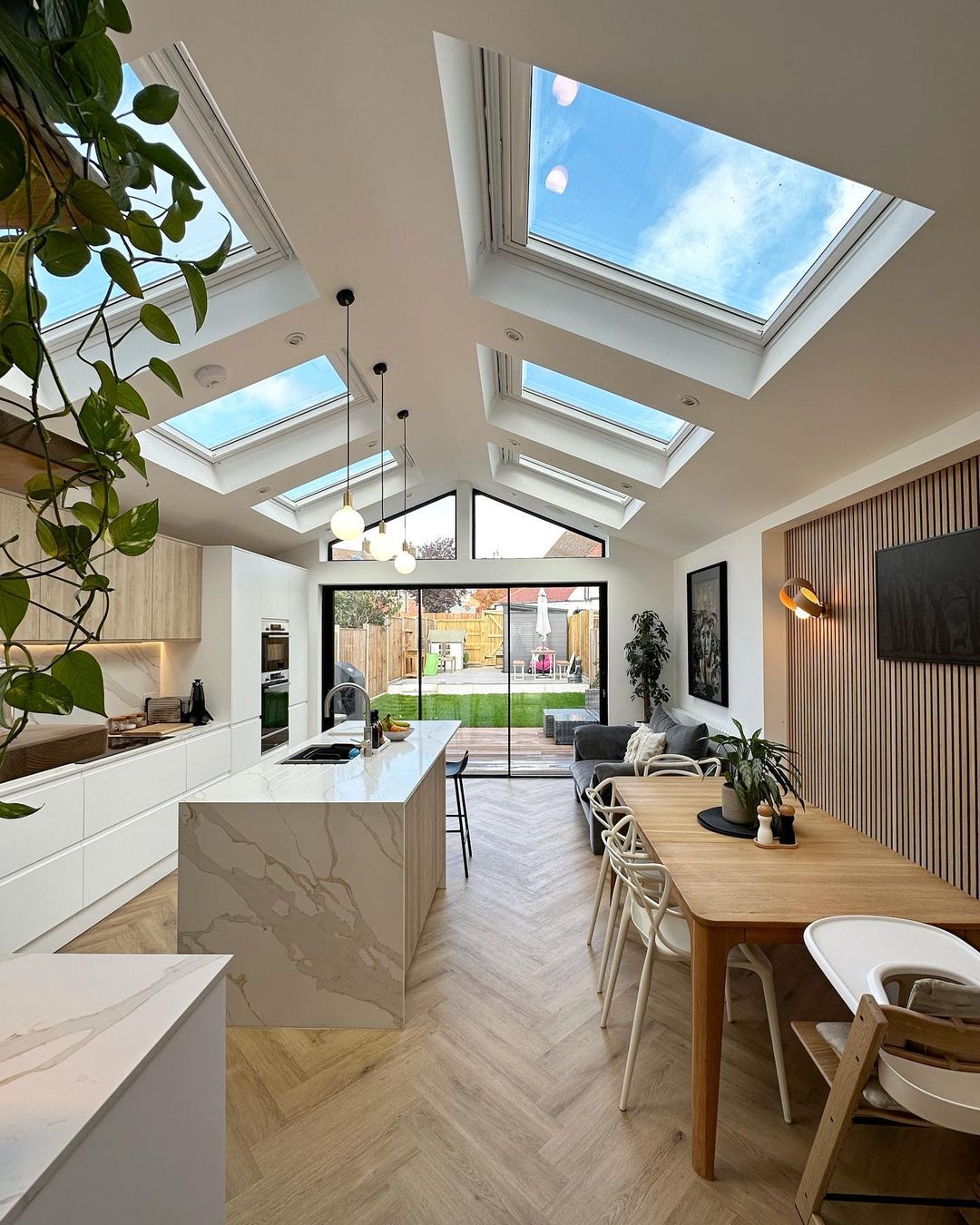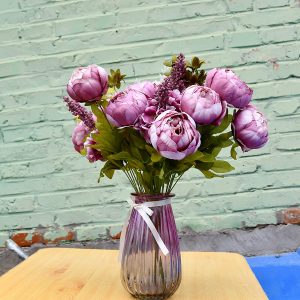‘Incorporating Natural Elements into Your Interior for Calmness‘ is all about sprucing up your home with elements like wood, water, stones, plants, fibers, and light to create a calming space.
When it comes to creating a space that feels calm and relaxing, there’s nothing quite like incorporating natural elements. Whether it’s the sight of greenery, the feel of wood underfoot, or the warmth of natural light, there’s just something about nature that has a soothing effect on the mind and body.
If you’re looking to bring some of that calmness into your home, the good news is that it’s easier than you might think. By incorporating just a few key natural elements into your interior design, you can create a space that feels peaceful, organic, and beautifully balanced.
In this guide, we take a closer look at what natural elements you can bring into your home. We also explore how to do it in a way that feels both stylish and functional.
Incorporating Natural Elements into Your Interior for Calmness
Whether you’re starting from scratch or just looking to make a few tweaks, there’s something here for everyone.
So, let’s dive in and explore how you can create a space that’s both beautiful and calm.
Types of Natural Elements to Incorporate
When it comes to incorporating natural elements into your interior design, there are a few key options to consider.
Here are a few of the most popular:
Natural Light
Natural light is a powerful tool when it comes to creating a calming and relaxing atmosphere in your home.
Not only does it help regulate our sleep patterns, it can also make a space feel brighter, more open, and more inviting.
When incorporating natural light into your interior design, consider the orientation of your rooms and the amount of natural light they receive.
If you’re starting from scratch, think about the placement of windows and doors, and consider adding skylights or roof windows to bring more natural light into your home.
If you’re looking to make a few tweaks, consider updating your window treatments.
Opt for sheer or light-filtering curtains or blinds, or remove heavy drapes altogether, to allow more natural light into your space.
You can also paint your walls in light, neutral colors to reflect light and create the illusion of a brighter, more open space.
Incorporating natural light into your interior design is a great way to bring some of the outdoors in and create a calm and relaxing atmosphere in your home.
Indoor Plants
Indoor plants are a classic way to bring a touch of the outdoors into your home.
Not only do they add a pop of color and texture to your space, they also help clean the air and create a calming atmosphere.
When choosing indoor plants, consider your lighting situation and the amount of time you’re willing to dedicate to maintenance.
Some low-light options include ferns, spider plants, and pothos, while succulents and cacti are great for those who prefer low-maintenance options.
You can incorporate indoor plants into your decor in a variety of ways.
Hang a macramé plant holder from your ceiling, place a few potted plants on a windowsill, or create a living wall with a collection of trailing plants.
The options are endless!
Incorporating indoor plants into your interior design is a simple and effective way to bring some of the outdoors in and create a calm and relaxing atmosphere in your home.
Textured Fabrics
When it comes to creating a space that feels calming and comfortable, textured fabrics can make all the difference.
Natural fibers like linen and cotton have a unique texture that feels great against the skin and can help create a cozy and inviting atmosphere.
Think about adding textured throw pillows or a cozy cotton throw blanket to your couch, or swap out your synthetic curtains for some natural linen drapes.
The added texture will help bring some of the outdoors in and create a space that feels warm and inviting.
Not only do natural fibers feel great, they’re also incredibly versatile.
You can choose from a wide range of colors and patterns, so it’s easy to find a style that matches your personal taste and fits in with the rest of your decor.
Incorporating textured fabrics into your interior design is a simple and effective way to create a space that feels calm, comfortable, and truly inviting.
Water Features
There’s something undeniably calming about the sound of running water, and that’s why water features can make such a great addition to your home.
Whether it’s a small tabletop fountain, a wall-mounted waterfall, or a standalone koi pond, a water feature can help create a peaceful and meditative atmosphere in any room.
When choosing a water feature, think about the size of the room and the style of the decor.
For smaller spaces, a compact fountain or a series of wall-mounted water droplets might be the perfect solution.
For larger rooms, consider a full-sized waterfall or a koi pond.
Water features can be a bit more involved than some of the other natural elements we’ve talked about, but they’re well worth the effort.
Not only do they add a touch of calm to your space, they can also help create a natural flow and bring the outdoors in.
Whether you’re starting from scratch or just looking to make a few changes, consider adding a water feature to your home.
Not only will it help create a peaceful and meditative atmosphere, it will also help you connect with nature in a new and exciting way.
Stones and Crystals
Stones and crystals are natural elements that can add a touch of grounding energy to your space.
Whether you choose to use them as decor or incorporate them into furniture pieces, like a stone-topped coffee table or crystal-studded light fixtures, stones and crystals can help create a sense of balance and harmony in your home.
When incorporating stones and crystals into your decor, it’s important to choose pieces that resonate with you.
Some people are drawn to smooth and polished stones, while others prefer rough and raw crystals.
Some popular choices include amethyst, rose quartz, and black tourmaline.
Incorporating stones and crystals into your decor can be as simple as adding a few small pieces to a bookshelf or coffee table, or as elaborate as creating a full-fledged crystal grid.
The key is to choose elements that resonate with you and help create the calm, grounding atmosphere you’re looking for.
Incorporating stones and crystals into your interior design is a great way to bring some of the outdoors in and create a space that feels balanced and harmonious.
Integrating Natural Elements into Your Space
Now that you know what types of natural elements you can incorporate into your interior design, let’s talk about how to actually make it happen.
Below are a few tips to keep in mind.
Choosing the Right Colors
Color is key when it comes to incorporating natural elements into your space.
You want to choose colors that complement the natural materials you’re using, rather than detracting from them.
Think earthy tones like greens, browns, and blues, or even consider going neutral with whites and beiges.
These colors will help create a harmonious look that feels both calm and natural.
Creating a Natural Flow
Another important aspect of incorporating natural elements into your space is making sure there’s a natural flow to your design.
This means arranging your furniture and decor in a way that feels organic and unforced.
Consider the natural lines and curves of the elements you’re using, and try to arrange your space in a way that feels like everything fits together seamlessly.
Balancing Nature with Comfort
Last but not least, it’s important to remember that you want to create a space that’s both calming and comfortable.
So, while you want to incorporate as many natural elements as possible, you also want to make sure that your space is still functional and livable.
This means choosing furniture and decor that both looks good and feels good to be in.
The costs of Incorporating Natural Elements into Your Interior for Calmness
When it comes to incorporating natural elements into your interior design, costs can vary depending on the materials and features you choose.
Using natural materials such as wood, stone, and textiles can be more expensive than using synthetic materials.
For example, using hardwood flooring or marble countertops can be more costly than using laminate flooring or laminate countertops.
However, natural materials can also add value to your home and last longer.
Incorporating natural elements such as plants into your home can have relatively low costs, as plants can vary in price from low to high depending on the type of plants and their size.
However, if you choose to incorporate more elaborate features such as a soaking tub, a rainfall shower, heated floors or a steam shower, the costs can be more significant.
When designing with nature in mind, it’s important to consider your budget and make choices that work for you.
You may also want to consider hiring a professional designer who can help you navigate the costs and find the best options for your budget.
It’s worth noting that incorporating natural elements into your home can be done incrementally, making it possible to do it in stages and adjust to your budget.
It’s also important to remember that incorporating natural elements into your home can have long-term benefits for your physical and mental well-being and can add value to your home.
So, while costs may be a consideration, they should not be the only factor in the decision-making process.
Conclusion
Related Post:




